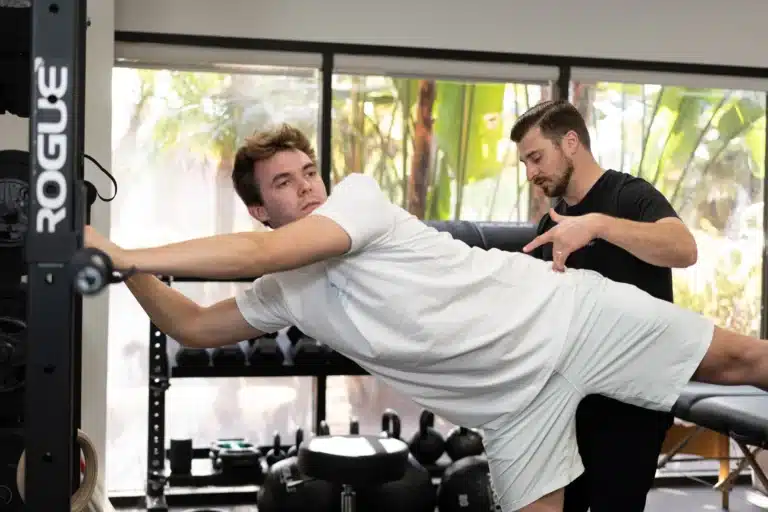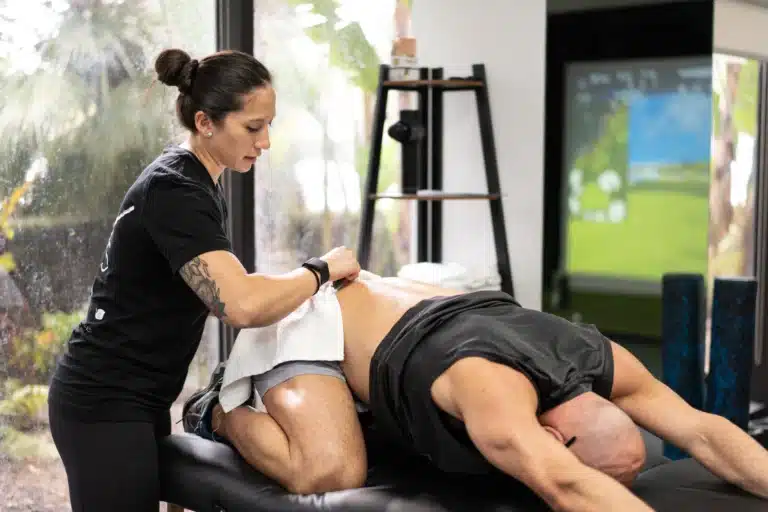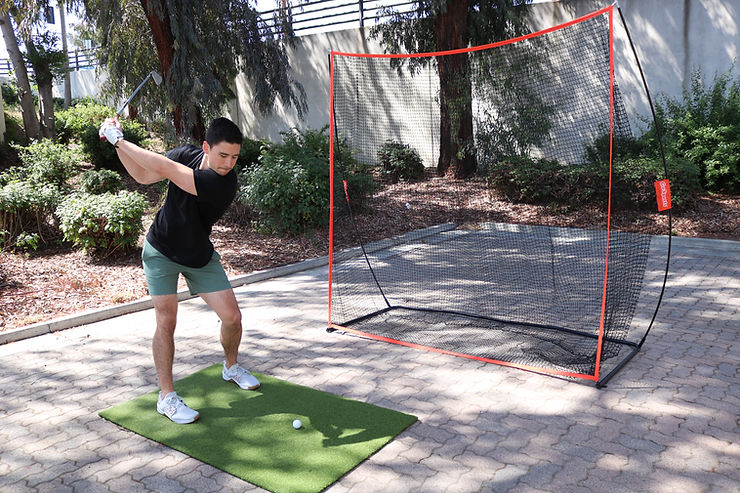Introduction
Hip pain is a common concern among runners. It is often a result of various factors such as overuse, muscle imbalances, or improper running techniques. This discomfort can hinder performance and lead to long-term injuries if not addressed promptly. Physical therapy for hip pain emerges as a valuable ally in the runner’s toolkit, offering a comprehensive approach to relieve hip pain and enhance the quality of life.
In this article, we will delve into the complexities of hip pain. We’ll explore the causes and detail effective physical therapy strategies. This will include the benefits of physical therapy for athletes to help runners find relief and improve their overall well-being.
Decoding Hip Pain: Insights for Runners
Understanding hip pain is important for runners, especially considering that 7 percent of U.S. adults suffer from this discomfort, as a study indicates. Typically presented as a dull ache in the hip joint, outer thigh, or buttocks. It can bring stiffness, limited range of motion, and discomfort during or after running. Identifying these symptoms and their triggers is the initial step toward personalized treatment.
Runners should pay attention to when the pain becomes more intense – during acceleration, deceleration, inclines, or declines. From running surfaces to footwear selection, every detail matters. Biomechanics is important; poor form, overstriding, or insufficient warm-up can all contribute. A running journal documenting training, changes, and pain onset provides a comprehensive view for healthcare professionals.
Causes of Hip Pain in Runners
Hip pain among runners is a complex issue with many contributing factors. Understanding these causes is fundamental to developing effective strategies for alleviation and prevention.
Overuse: Overuse injuries are the primary cause of hip pain in runners. The repetitive nature of running can lead to excessive strain on the hip joint. Usually happens if training intensity or volume is increased too rapidly. Overuse can result in inflammation, discomfort, and chronic pain if not addressed.
Muscle Imbalances: Muscle imbalances play an essential role in hip pain. Weakness or tightness in specific hip muscle groups can disrupt the delicate balance needed for smooth and pain-free movement. For instance, tight hip flexor muscles and weak glutes create an imbalance that can increase stress on the hip joint during running.
Poor Biomechanics: Biomechanics or the way a runner moves. It can significantly influence hip health. Poor running form, such as overstriding or inadequate foot strikes. It can cause undue stress on the hips. Addressing these biomechanical issues is crucial for preventing recurring hip pain.
Tight Hip Flexors: Tight hip flexors are a common issue among runners. It is a result of prolonged periods of sitting and inadequate stretching. When these muscles are tight, they can alter pelvic alignment and contribute to hip pain during and after running.
Weak Glutes: Hip pain can be caused by weak gluteal muscles, particularly the gluteus medius. These muscles play a crucial role in stabilizing the pelvis during running. When weak, the hip joint may experience increased stress, leading to discomfort and potential injury.
Improper Running Form: A runner’s form has a direct impact on the load placed on the hips. Issues such as overpronation or inadequate warm-up can increase the risk of hip pain. Proper gait analysis can help identify and correct these form-related problems.
Underlying Issues: In some cases, runners may experience hip pain due to underlying issues such as bursitis, tendonitis, or stress fractures. These conditions often require specific attention and targeted interventions to address the root cause of the pain.
Role of Physical Therapy in Hip Pain
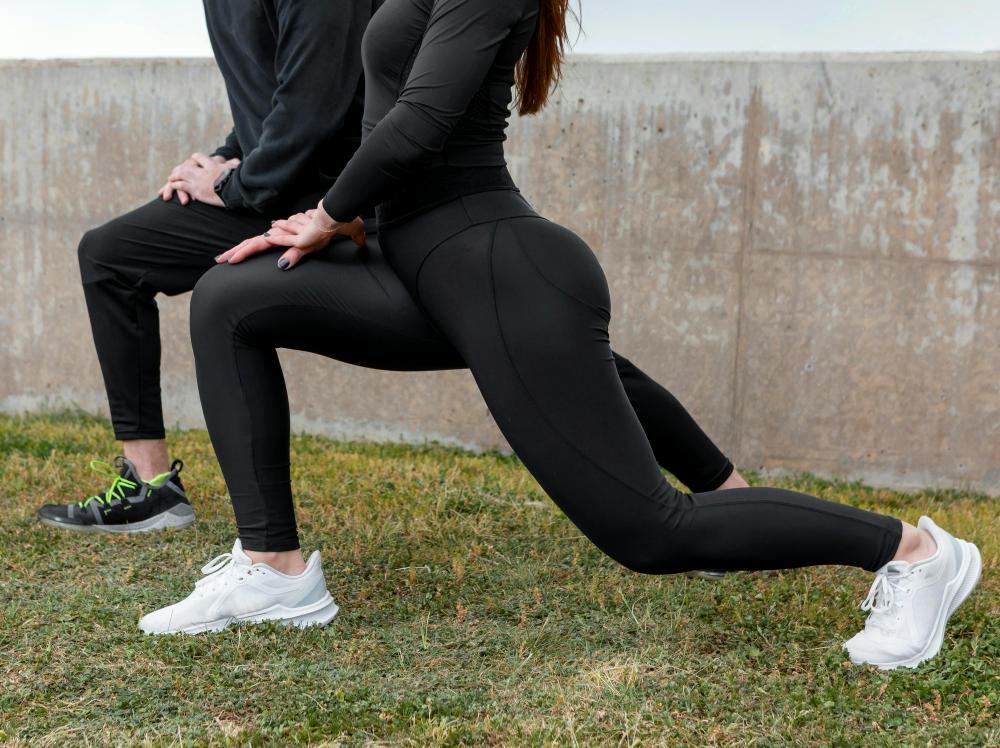
Physical therapy is important in managing and preventing hip pain in runners. It involves a holistic approach that directly impacts daily activities. These comprehensive strategies incorporate targeted physical therapy exercises for hip pain, manual therapy, and education. A skilled physical therapist assesses the runner’s biomechanics, gait, and overall musculoskeletal health to tailor a physical therapy treatment plan addressing specific needs.
Strategies of Physical Therapy
Pain Management Strategies
Effectively managing pain is a central focus of physical therapy for hip pain in runners. By prioritizing pain management, therapists aim not only to relieve immediate discomfort but also to create an environment that contributes to healing and long-term well-being.
Ice and Heat Therapy: One fundamental approach to pain management involves the strategic use of ice and heat therapy. Ice is employed to reduce inflammation and numb the affected area. It is particularly beneficial in the acute phase of hip pain when swelling is an active issue. Heat therapy is utilized to improve blood circulation, relax muscles, and alleviate stiffness, making it especially valuable in addressing chronic hip pain.
Manual Therapy: Manual therapy is often a key component of pain management in hip rehabilitation. Therapists use hands-on techniques to manipulate soft tissues, joints, and muscles. It can help release tightness, improve flexibility, and alleviate muscle spasms. All of this contributes to pain reduction.
Anti-Inflammatory Medications: In some cases, physical therapists may collaborate with healthcare providers to incorporate anti-inflammatory medications into the pain management plan. While not a standalone solution, these medications can complement other interventions. It helps control inflammation and manage pain, especially during the acute phase of injury.
Mobility Improvement Strategies
Improving hip mobility is a key objective in physical therapy. Recognizing the pivotal role that flexibility and range of motion play in overall hip health. Physical therapists employ various strategies, integrating specialized exercises and physical therapy stretches for hip pain to target key muscle groups and enhance functional mobility for runners.
Stretching Exercises: This is a primary focus in mobility improvement, and it involves incorporating stretching exercises designed to address specific areas of the hip. These may include dynamic stretches to warm the muscles before physical activities and static stretches to enhance flexibility and relieve tension post-exercise. Targeting the hip flexors, abductors, and external rotators through a range of stretching techniques helps release tightness, promoting increased joint mobilization.
Strengthening Exercises: Complementary to stretching, core exercises are integral to mobility improvement. Physical therapists aim to provide stability and support by targeting the muscles surrounding the hip joint, such as the glutes and hip abductors. Strengthening these muscle groups not only enhances overall hip function but also contributes to a more balanced musculoskeletal system. This can help reduce the risk of strain and injury.
Gait and Posture Correction Strategies
Understanding the complexities of a runner’s gait and posture is important to addressing and preventing hip pain. Runners may develop compensatory mechanisms that contribute to discomfort and injuries. Physical therapists play a crucial role in this context. Employing thorough assessments and targeted strategies to correct gait and posture irregularities.
Gait Assessment: Physical therapists begin by conducting a detailed analysis of the runner’s gait – the pattern of movement while walking or running. This assessment involves observing the alignment of the lower limbs, foot strike patterns, and overall body mechanics during the running stride. Identifying abnormalities in the gait helps pinpoint areas of concern contributing to hip or joint pain.
Posture Evaluation: A comprehensive evaluation of the runner’s posture is also done. Poor posture can lead to misalignments and increased stress on the hip joint during running. Physical therapists examine factors such as pelvic tilt, spinal alignment, and shoulder positioning to gain insights into the overall postural dynamics.
Muscle Imbalance Identification: Compensatory mechanisms often arise from muscle imbalances. This occurs when certain muscle groups are overactive while others are underused. Physical therapists identify these imbalances through a combination of manual assessments and functional tests. Tight hip flexors and weak glutes are common imbalances that can contribute to hip pain. They are usually addressed in the corrective strategies.
Targeted Exercises: Once irregularities are identified by physical therapists. They design targeted exercises to correct muscle imbalances and improve gait. These therapeutic exercises aim to strengthen underutilized muscles, release tension in overactive ones, and restore balance.
Running Mechanics Guidance: Aside from exercises, physical therapists provide guidance on proper running mechanics. This involves coaching runners on optimal foot strikes, stride length, and arm movement. Correcting running form is essential for reducing excessive stress on the hips and prevent marathon injuries.
Orthotic Recommendations: In some cases, physical therapists may recommend orthotic devices to address structural issues contributing to gait irregularities. Customized shoe inserts or orthopedic footwear can help correct foot alignment and support more efficient movement. It can help reduce chronic muscle strain on the hips.
Pre-Physical Therapy Assessment
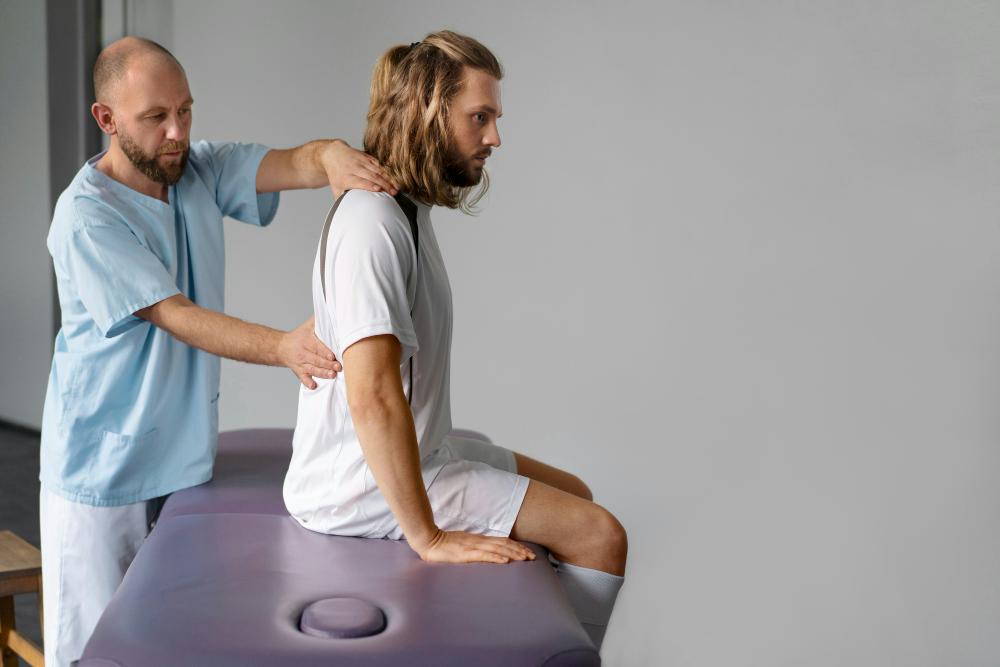
Before beginning a physical therapy routine, a detailed assessment is performed to determine the runner’s specific needs. This involves a detailed medical history, musculoskeletal examination, and, often, diagnostic imaging to pinpoint the root cause of hip pain. The insights gained from this assessment form the foundation for a personalized treatment plan.
Return to Running and Injury Prevention
As the runner proceeds through physical therapy, the emphasis switches to a safe return to running and injury prevention in the long run. Physical therapists collaborate with runners to develop a gradual return-to-run program. This includes proper warm-up routines, strength maintenance, and ongoing monitoring of hip health. Education on self-care and injury prevention strategies further empowers runners to proactively manage their hip health.
Conclusion
In running, hip pain can be a tough challenge for runners pursuing an active lifestyle. However, with the right strategies, runners can overcome discomfort and build resilience. Physical therapy for hip pain emerges as a key player in this journey, offering tailored interventions to address the root causes of hip pain and promote lasting well-being. The benefits of physical therapy for athletes extend beyond immediate pain relief, aiding in restoring normal activities. By combining pain management, mobility improvement, and gait correction strategies, runners can not only find relief but also enhance their performance and reduce the risk of future injuries.
If you have hip pain, consider speaking with a professional physical therapist like The Movement Schopp for tailored guidance and treatment. Our unique method can provide specific insights on how to treat hip pain from running, opening the way for you to return to pain-free running.
FAQs
What to do with hips while running?
While running, it’s important to maintain proper hip alignment. Focus on engaging your core and ensuring a balanced stride. Regular strength and flexibility exercises targeting the hips can contribute to better stability and reduced strain.
How do you stretch sore hips from running?
Incorporate hip stretches into your post-run routine. Hip flexor stretches, pigeon poses, and dynamic stretches can help alleviate soreness. Consult a physical therapist to ensure you use the correct techniques for your specific condition.
How does hip mobility help with running?
Hip mobility is important for running efficiency and injury prevention. Improved hip mobility enhances the range of motion, allowing for a smoother and more controlled stride. It also reduces the likelihood of compensatory movements that can lead to muscle imbalances and sharp pain.


